Giovanni Battista Tiepolo (1696-1770)
Get a Giovanni Battista Tiepolo (1696-1770) Certificate of Authenticity for your painting (COA) for your Giovanni Battista Tiepolo (1696-1770) drawing.
For all your Giovanni Battista Tiepolo (1696-1770) artworks you need a Certificate of Authenticity (COA) in order to sell, to insure or to donate for a tax deduction.
Getting a Giovanni Battista Tiepolo (1696-1770) Certificate of Authenticity (COA) is easy. Just send us photos and dimensions and tell us what you know about the origin or history of your Giovanni Battista Tiepolo (1696-1770) painting or drawing.
If you want to sell your Giovanni Battista Tiepolo (1696-1770) painting or drawing use our selling services. We offer Giovanni Battista Tiepolo (1696-1770) selling help, selling advice, private treaty sales and full brokerage.
We have been authenticating Giovanni Battista Tiepolo (1696-1770) and issuing certificates of authenticity since 2002. We are recognized Giovanni Battista Tiepolo (1696-1770) experts and Giovanni Battista Tiepolo (1696-1770) certified appraisers. We issue COAs and appraisals for all Giovanni Battista Tiepolo (1696-1770) artworks.
Our Giovanni Battista Tiepolo (1696-1770) paintings and drawings authentications are accepted and respected worldwide.
Each COA is backed by in-depth research and analysis authentication reports.
The Giovanni Battista Tiepolo (1696-1770) certificates of authenticity we issue are based on solid, reliable and fully referenced art investigations, authentication research, analytical work and forensic studies.
We are available to examine your Giovanni Battista Tiepolo (1696-1770) painting or drawing anywhere in the world.
You will generally receive your certificates of authenticity and authentication report within two weeks. Some complicated cases with difficult to research Giovanni Battista Tiepolo (1696-1770) paintings or drawings take longer.
Our clients include Giovanni Battista Tiepolo (1696-1770) collectors, investors, tax authorities, insurance adjusters, appraisers, valuers, auctioneers, Federal agencies and many law firms.
We perform Giovanni Battista Tiepolo art authentication, appraisal, certificates of authenticity (COA), analysis, research, scientific tests, full art authentications. We will help you sell your Giovanni Battista Tiepolo or we will sell it for you.
Do you think you may own a painting by Tiepolo? We authenticate, appraise and issue Certificates of Authenticity (COA) for all paintings by Teipolo.
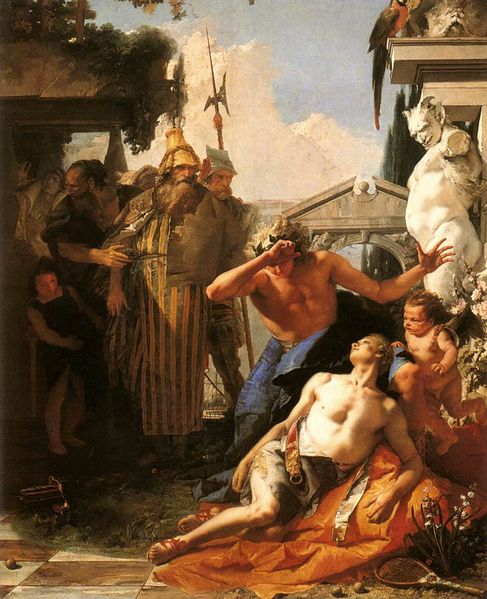
Tiepolo also known as Gianbattista or Giambattista Tiepolo was a Italian painter and printmaker, considered among the last “Grand Manner” fresco painters.
Giambattist Tiepolo was born in Venice, the last of six children of sea-captain, Domenico Tiepolo and his wife, Orsetta. While the Tiepolo surname belongs to a patrician family, Giambattista’s father did not claim noble lineage. The future artist was baptised in his parish church (S. Pietro di Castello) as Giovanni Battista, in honour of his godfather, a Venetian nobleman called Giovanni Battista Dorià. His father Domenico died a year after his birth, leaving Orsetta in difficult financial circumstances.
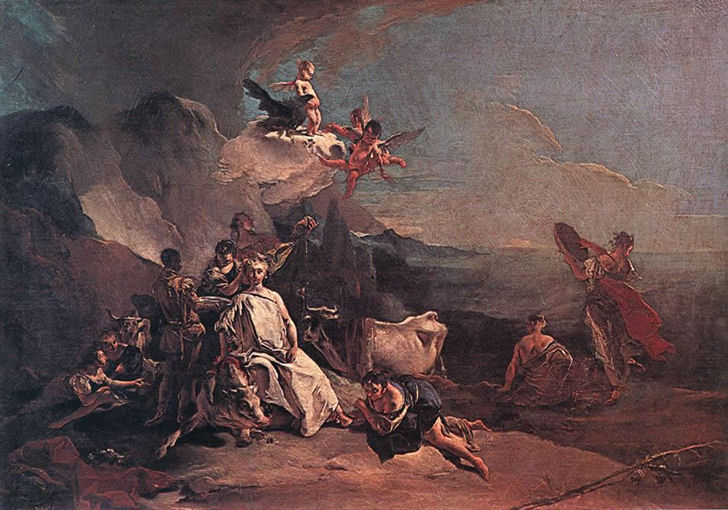
Giambattista was initially a pupil of Gregorio Lazzarini, but the influences from elder contemporaries such as Sebastiano Ricci and Giovanni Battista Piazzetta are stronger in his work. At 19 years of age, Tiepolo completed his first major commission, the Sacrifice of Isaac (now in the Accademia). He left Lazzarini studio in 1717, and was received into the Fraglia guild of painters.
In 1719, Tiepolo married Maria Cecilia Guardi, sister of two contemporary Venetian painters Francesco and Giovanni Antonio Guardi. Together, Tiepolo and his wife had nine children. Four daughters and three sons survived childhood. Two sons, Domenico and Lorenzo, painted with him as his assistants and achieved some independent recognition. His third son became a priest.

A patrician from the Friulan town of Udine, Dionisio Delfino, commissioned from the young Tiepolo the fresco decoration of the chapel and palace (1726-1728). It was an almost revolutionary he decorative Italian Rococo movement of the 18th century. Tiepolo’s first masterpieces in Venice were a cycle of enormous canvases painted to decorate a large reception room of Ca’ Dolfin, Venice (ca. 1726–1729), depicting ancient battles and triumph.
He was soon in high demand, which he matched with an astounding prolificity. He painted canvases for churches such as that of Verolanuova (1735-40), for the Scuola dei Carmini (1740-47), and the Scalzi 1743-1744), a ceiling for the Palazzi Archinto and Casati-Dugnani in Milan (1731), the Colleoni Chapel in Bergamo (1732-1733), a ceiling for the Gesuati (Santa Maria del Rosario) in Venice of St. Dominic Instituting the Rosary (1737-39), Palazzo Clerici, Milan (1740), decorations for Villa Cordellini at Montecchio Maggiore (1743-1744) and for the ballroom of the Palazzo Labia, now a television studio in Venice, showing the Story of Cleopatra (1745-1750).
By 1750, Tiepolo’s reputation was firmly established throughout Europe, and accompanied by his son Giandomenico, he traveled to Würzburg at the call of Prince Bishop Karl Philipp von Greiffenklau in 1750, where he resided for three years and executed magnificent ceiling paintings in the New Residenz palace (completed 1744). His painting for the grandiose Neumann-designed entrance staircase (Treppenhaus) is the most massive ceiling fresco in the world at 7287 square feet (677 m²), and was completed in collaboration with his sons, Giandomenico and Lorenzo. His Allegory of the Planets and Continents depicts Apollo, embarking on his daily course; deities around him symbolize the planets; allegorical figures (on the cornice) represent the four continents, notably including America. He also frescoed the Kaisersaal salon.
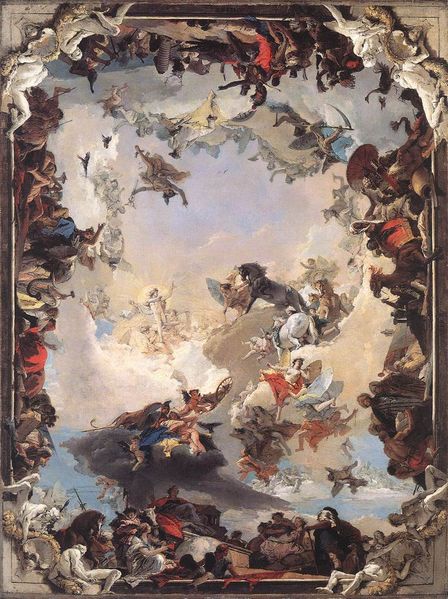
He then returned to Venice in 1753, Tiepolo was now richly in demand locally and abroad, where he was elected President of the Academy of Padua. He now completed theatrical frescoes for churches; the Triumph of Faith for the Chiesa della Pietà; panel frescos for Ca’ Rezzonico (which now also holds his ceiling fresco from the Palazzo Barbarigo); and paintings for patrician villas in the Venetian countryside, such as Villa Valmarana (Vicenza) and a large panegyric ceiling for the now nearly vacant Villa Pisani in Stra.
In celebrated frescoes at the Palazzo Labia, he depicted two frescoes on the life of Cleopatra: Meeting of Anthony and Cleopatra and Banquet of Cleopatra, as well as a central ceiling fresco depicts Triumph of Bellerophon over Time. He collaborated with an expert in perspective, Girolamo Mengozzi Colonna. Colonna who also designed sets for opera highlights the increasing tendency towards composition as a staged fiction in his frescoes. The architecture of the Banquet fresco also recalls Veronese’s Wedding at Cannae
In 1761, Charles III commissioned from the painter a large ceiling fresco to decorate the throne room of the royal palace of Madrid. The panegyric theme is the Apotheosis of Spain. In Spain, he incurred the jealousy and the bitter opposition of Anton Raphael Mengs.
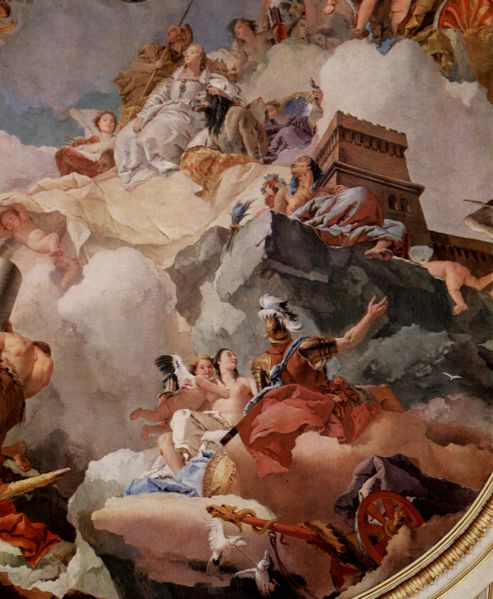
Tiepolo died in Madrid on March 27, 1770. After his death, the rise of stern Neoclassicism and the post-revolutionary decline of royal absolutism led to the slow decline of the Tiepolo style, but had failed to dent his impact on artistic progress. By 1772 Tiepolo was sufficiently famous to be documented as painter to Doge Giovanni Cornaro, in charge of the decoration of Palazzo Mocenigo a San Polo.
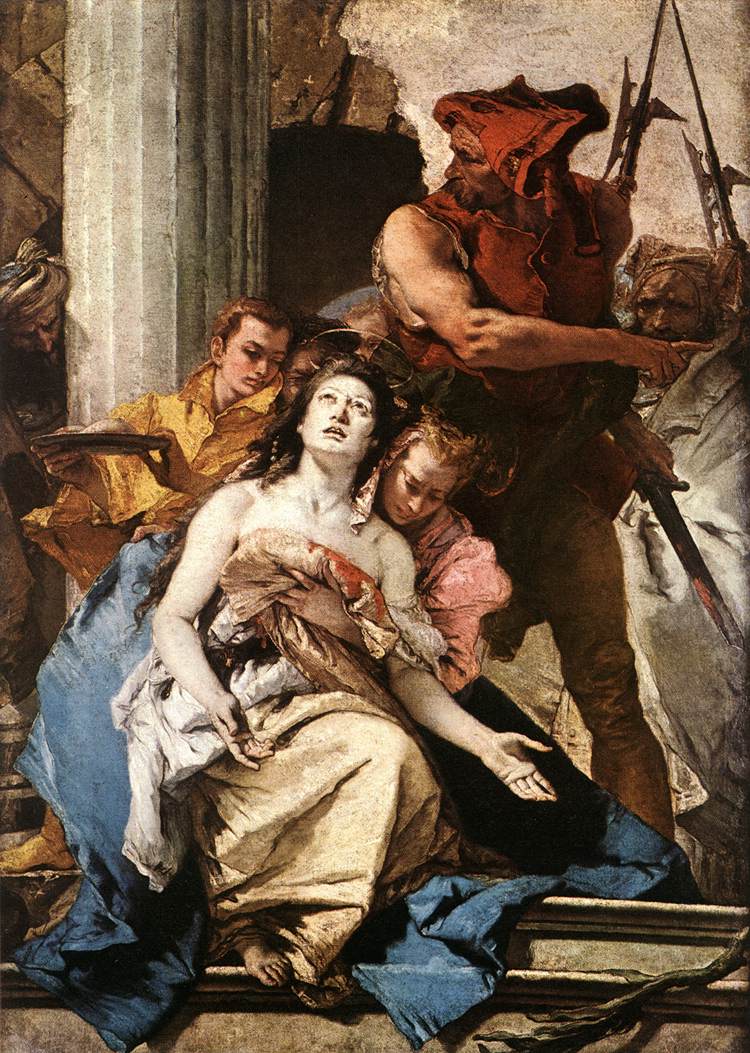
In his most fluid elaborations, Tiepolo has closest affinity to Ricci, Piazzetta, and Federico Bencovich. He is a shadowless Rubens, a sunnier rococo Cortona. His sumptuous historical set-pieces are enveloped in a regal luminosity. He is principally known for his fresco work, particularly his panegyric ceilings. These followed the Baroque tradition of Pietro da Cortona and Andrea Pozzo, converting roof to painted sky, elevating petty aristocrats to divine status, and allowing for vast compositions that merged with the delicate ornamentation of the Rococo stucco. Frescoes, such as Palazzo Valmarana (Vicenza) not only peer into the mythological scenes, but are meant to relocate viewers into their midst. The earliest example of this is perhaps his canvases in the Ca’ Dolfin, which allowed Tiepolo to introduce exuberant costumes, classical sculpture, and action that appears to spill from the frames into the room. Originally set into recesses, they were surrounded with frescoed frames.
While his painting is infused with the Venetian spirit, his luminosity is not seen in the previous masters; however, Tiepolo is considered the last Olympian painter of the Venetian Republic. Like Titian before him, Tiepolo was an international star, treasured by royalty far a field for his ability to depict glory in fresco. His children developed similar, but distinctive styles.
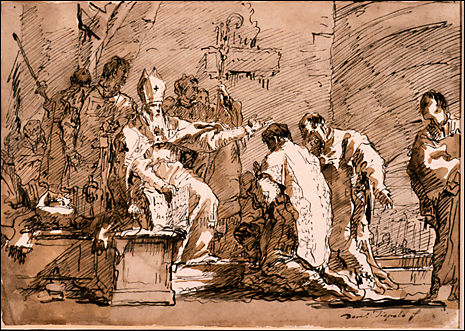
Reviews
1,217 global ratings
5 Star
4 Star
3 Star
2 Star
1 Star
Your evaluation is very important to us. Thank you.
